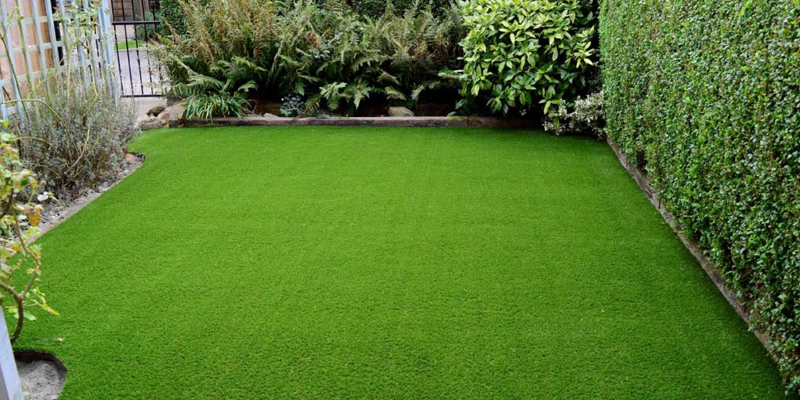What is Artificial Grass
You might be old enough to remember the emergence of artificial grass into the American landscape. Developed in the mid-1960s as a surface for athletic fields, it was first installed in the Houston Astrodome in 1966. That’s when “astroturf” became part of the vernacular.
Here are a few fun facts: AstroTurf is actually a specific brand of artificial grass. But like Kleenex or Q-Tips, the brand name became the blanket term for all similar products. The 1971 Super Bowl at the Orange Bowl in Miami was the first played on artificial grass. And the iconic mid-century modern home of The Brady Bunch had a backyard made of AstroTurf!

Today, artificial grass has a lot more uses beyond the playing field, including residential. But it’s not without its detractors. If you’re considering installing artificial grass in your yard, here’s what you should know.
Artificial grass is a synthetic ground covering made to look like real grass. It’s evolved over the decades and no longer resembles the fake-looking, plastic-y product it once was. But it’s still synthetic, still made of petroleum-based plastics. Here are the three types of artificial grass:
- Nylon artificial grass is considered the most durable and long-lasting, but it’s also the most expensive. It’s the stiffest of artificial grass materials. So while it’s good for high-traffic areas, it might not be ideal for areas where kids or pets will be playing.
- Polyethylene artificial grass has a realistic look and texture and is considered a good mid-range option for an artificial lawn. It’s not as durable as nylon, but its soft feel makes it suitable for play areas and zones where people will be walking barefoot.
- Polypropylene artificial grass is the least expensive but also the least durable. Because it can’t stand up to high traffic, it’s best used for smaller areas that don’t get a lot of daily use, like putting green
Artificial Grass Maintenance and Cleaning
Artificial grass is low maintenance, but not maintenance-free. Here are the most basic cleaning and maintenance steps to prolong the life of your synthetic lawn:
- Clean up stains and spills right away using a mild household detergent. You can add a few drops of ammonia for tougher stains. If your pets do their business on your artificial lawn, pick up solid waste as soon as possible and hose down the area, as well as any places where animals urinate.
- Hose down the lawn periodically to wash away accumulated dirt and debris.
- Rake the lawn with a soft, non-metal rake, for cleaning and to preserve the life of the fibers.
- For superior cleaning, consider investing in a leaf blower with a vacuum function.
